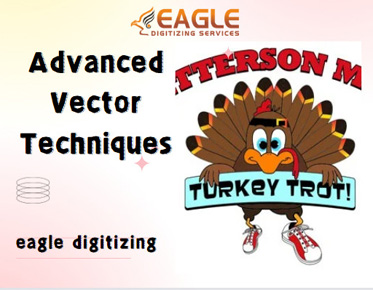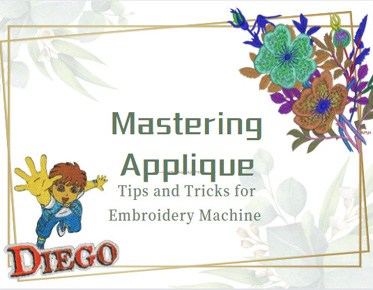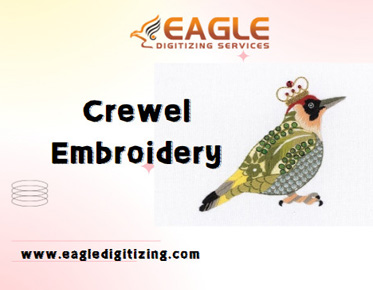How Can You Master Advanced Techniques for Creating Stunning Vector Art Beyond the Pen Tool?
Vector art stands at the forefront of digital creativity, offering artists the power to craft visually arresting designs with unparalleled precision and scalability. While mastering the fundamental tools of vector creation is crucial, delving into advanced techniques opens up a realm of endless possibilities, allowing artists to push the boundaries of their artistic expression. In this comprehensive guide, we'll delve into a myriad of advanced techniques that elevate vector art conversion from mere illustration to true works of art.
● Layering and
Grouping Strategies
● Exporting and
Output Optimization
Anchor points serve as the building blocks of vector shapes, acting as the anchor from which lines and curves extend. Understanding the significance of anchor points is paramount for achieving intricate and precise designs that captivate the eye.
Precision in anchor point placement is the cornerstone of meticulous vector artistry. By carefully positioning anchor points, artists can ensure seamless transitions and razor-sharp edges, resulting in artwork that exudes professionalism and attention to detail.
Leveraging handles, also known as control handles or direction lines, provide artists with the finesse and control needed to sculpt intricate shapes and curves with unparalleled precision. These handles allow for fluid manipulation of anchor points, enabling artists to achieve organic and dynamic forms that breathe life into their creations.
Bezier curves are the backbone of smooth, flowing lines in vector art, offering artists the flexibility to create complex shapes and contours with graceful curves and precise angles.
Manipulating Bezier curve handles allows artists to exert fine-tuned control over the curvature of their lines, enabling them to achieve the perfect balance between fluidity and precision. By adjusting the length and angle of handles, artists can sculpt curves that are both natural and visually appealing.
Tips for achieving smooth and natural curves include minimizing the number of anchor points used, maintaining consistent handle lengths, and paying careful attention to the placement of control handles. By mastering these techniques, artists can create artwork that flows seamlessly and captivates the viewer's imagination.
While basic shapes form the foundation of vector art, advanced shape creation techniques allow artists to break free from the constraints of predefined templates and unleash their creativity. From intricate polygons to celestial stars, the possibilities are limited only by the artist's imagination.
Custom shape creation techniques empower artists to sculpt unique and and by employing creative manipulation techniques, artists can breathe life into their compositions and imbue them with a sense of depth and dimensionality that transcends traditional boundaries.
Exploring the creative potential of shape tools opens up a world of artistic expression. By experimenting with geometric forms, blending shapes, and incorporating symmetry and asymmetry, artists can infuse their artwork with personality and intrigue, captivating viewers and inviting them to explore the intricacies of their designs.
Gradient mesh heralds a new era of shading and depth in vector artistry, offering artists unparalleled control over the interplay of light and shadow. By dividing shapes into a grid of mesh points and applying color gradients, artists can achieve stunningly realistic effects that rival traditional painting techniques.
Creating lifelike gradients requires a delicate balance of artistry and technical skill. By strategically placing mesh points and adjusting their color and transparency, artists can replicate the subtle nuances of light and shadow, breathing life into their artwork and imbuing it with a sense of depth and realism.
Fine-tuning mesh points is essential for achieving the desired level of detail and realism in gradient mesh artwork. By meticulously adjusting individual mesh points and refining color transitions, artists can evoke a sense of texture and dimensionality that draws viewers into their creations, inviting them to immerse themselves in the beauty of the artwork.
Clipping masks offer a powerful tool for creating complex shapes and effects in vector art. By defining a shape as a mask and applying it to other objects or layers, artists can selectively reveal or conceal portions of their artwork, opening up endless possibilities for creativity and experimentation.
The versatility of clipping masks allows artists to combine multiple shapes and layers to create intricate compositions and visual effects that would be difficult to achieve using traditional methods. Whether creating intricate patterns, complex textures, or dynamic overlays, clipping masks provide artists with the flexibility to realize their artistic vision with precision and ease.
Applying gradients and textures within clipping masks adds depth and dimension to vector image, enhancing its visual impact and creating a sense of depth and texture that elevates the overall composition. By experimenting with different blending modes, opacity levels, and layering techniques, artists can create captivating visuals that captivate the imagination and leave a lasting impression on viewers.
The brush library is a treasure trove of artistic potential, offering artists a vast array of tools and textures to explore and experiment with. From naturalistic brushes that mimic traditional media to dynamic effects that add flair and personality to artwork, the possibilities are endless.
Customizing brushes allows artists to tailor their tools to suit their unique style and creative vision. By adjusting parameters such as size, shape, opacity, and flow, artists can create custom brushes that produce a wide range of effects, from delicate textures to bold, expressive strokes.
Applying dynamic effects such as blurs, distortions, and shadows adds depth and dimension to vector artwork, bringing it to life with a sense of movement and dynamism. By experimenting with different effects and blending modes, artists can create visually striking compositions that capture the imagination and leave a lasting impression on viewers.
Typography plays a crucial role in vector art, conveying messages and adding context to visual compositions. Mastering typographic techniques is essential for achieving polished and professional results that command attention and engage the viewer.
Kerning, leading, and tracking techniques allow artists to fine-tune the spacing and alignment of text, ensuring readability and visual harmony in their designs. By adjusting these parameters with precision and care, artists can create typography that is both aesthetically pleasing and easy to read, enhancing the overall impact of their artwork.
Creative text manipulation techniques, such as warping, outlining, and blending, offer endless opportunities for experimentation and innovation in vector typography. Whether creating custom letterforms, incorporating text into shapes, or exploring unique typographic treatments, artists can use these techniques to push the boundaries of traditional typography and create artwork that is truly one-of-a-kind.
Organizing vector elements into layers is essential for maintaining clarity and efficiency in complex compositions. By grouping related elements together and organizing them into logical hierarchies, artists can streamline their workflow and make it easier to navigate and edit their artwork.
Utilizing layers provides artists with greater control and flexibility over their artwork, enabling them to experiment with different arrangements and compositions without fear of losing progress. By organizing elements into separate layers based on their function or appearance, artists can work more efficiently and make changes with confidence.
Grouping techniques allow artists to combine related elements into cohesive units, simplifying the editing process and making it easier to manage and manipulate complex compositions. Whether grouping objects for organizational purposes or creating complex arrangements with nested groups, artists can use grouping techniques to enhance their workflow and create artwork that is both cohesive and compelling.
Understanding color modes and profiles is essential for achieving accurate and consistent color reproduction in vector art. By choosing the right color mode and profile for their artwork, artists can ensure that colors are displayed accurately and vibrantly across different devices and platforms.
Utilizing gradients and blends offers artists a versatile tool for creating dynamic and visually striking color effects. By experimenting with different gradient styles, blending modes, and color combinations, artists can add depth and dimension to their artwork and create eye-catching visual effects that command attention and evoke emotion.
Creative use of color swatches and palettes allows artists to experiment with different color schemes and combinations, adding richness and complexity to their artwork. By creating custom color palettes or exploring pre-made swatch libraries, artists can infuse their artwork with personality and style, creating compositions that are as unique and vibrant as they are.
Choosing the right file formats is crucial for ensuring that vector artwork is displayed accurately and efficiently across different platforms and media. By selecting the appropriate file format for their intended use, artists can ensure that their artwork looks its best and is compatible with a wide range of devices and applications.
Optimizing vector art for various outputs, whether for print or web use, requires careful consideration of factors such as resolution, color space, and file size. By optimizing their artwork for specific output requirements, artists can ensure that their designs look sharp and vibrant, whether viewed on a high-resolution screen or printed on a large-format poster.
Preparing files for print involves ensuring that artwork meets the necessary specifications and requirements, such as bleed and trim settings, to ensure a seamless printing process. By following best practices for print preparation and working closely with printers and manufacturers, artists can ensure that their artwork is reproduced accurately and faithfully, regardless of the final output medium.
In conclusion, mastering advanced techniques
in vector artistry opens up a world of creative possibilities, allowing artists
to push the boundaries of their imagination and create stunning visual
compositions that captivate and inspire. By honing their skills in anchor point
manipulation, Bezier curve handling, shape creation, and beyond, artists can
unlock the full potential of vector artwork and bring their visions to life with
unparalleled clarity and precision.



